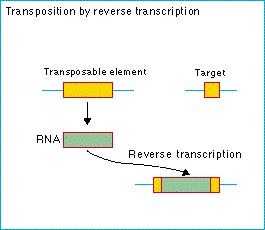Molecular and Mendelian Genetics - What is selfish DNA?

Transposition
For scattered repetitive DNA the process known as transposition may be responsible.
Transposition is the process where certain sequences of DNA copy themselves elsewhere in the genome. These mobile genetic sequences are called transposable elements, or jumping genes.
Two types of transposition:
• Conservative transposition
The number of copies of the transposed sequence is the same before and after transposition.
• Replicative transposition
The number of copies increases. This can be achieved by the reverse transcription of an RNA intermediate, as shown in the figure.
Replicative transposition could produce a scattered repeat sequence. After its origin in one individual, it could then increase in frequency (by selection or drift) to result in the pattern of scattered repeats we now observe.
Figure: replicative transposition. Extra copies of the transposable element are made. In some cases, replicative transposition is achieved by reverse transcription.
| Next |



